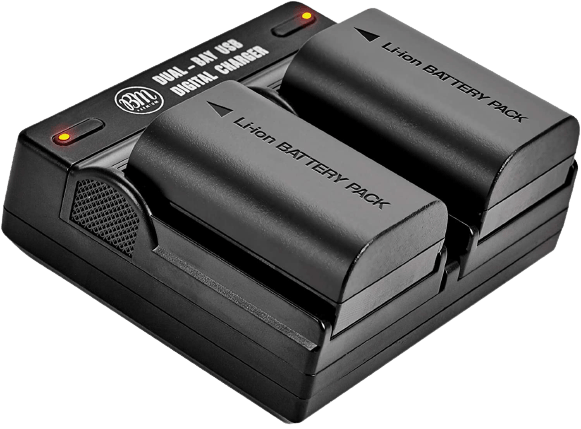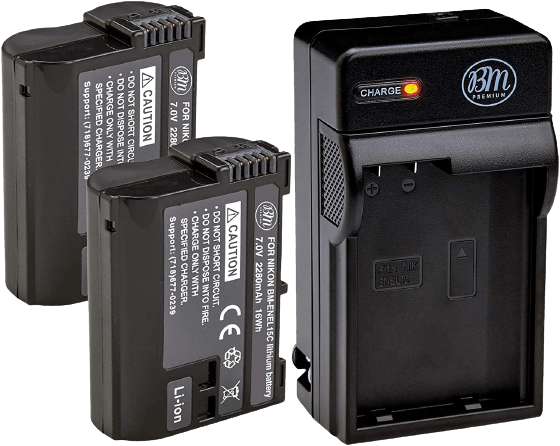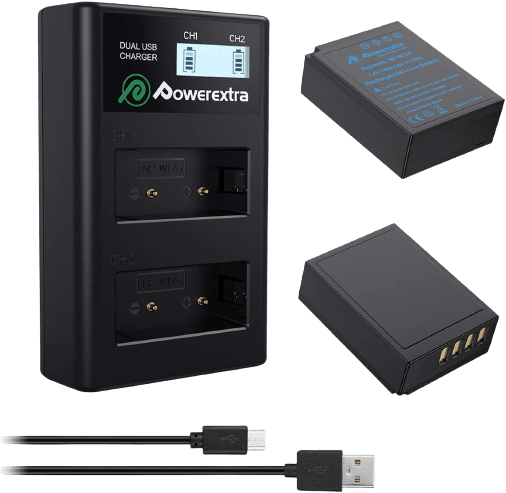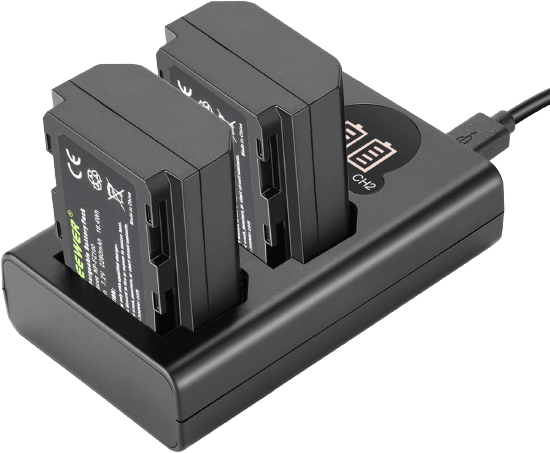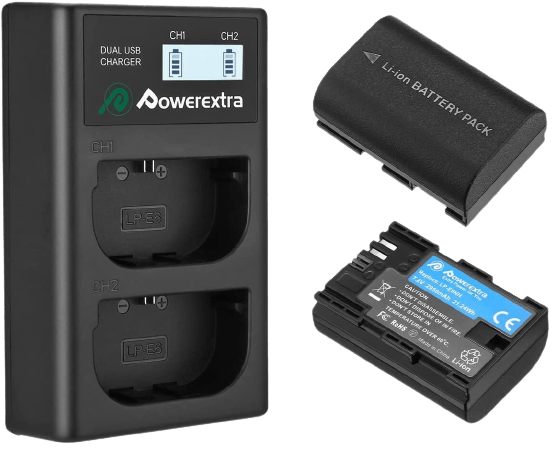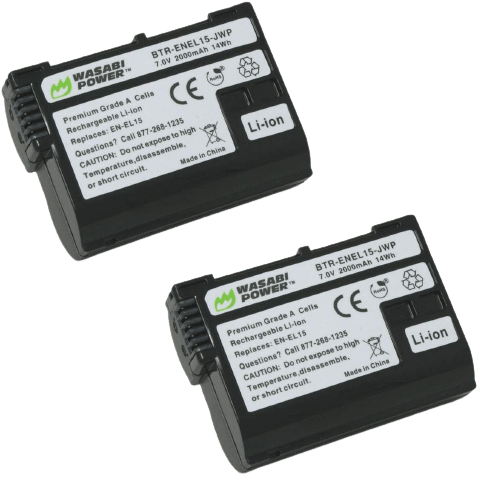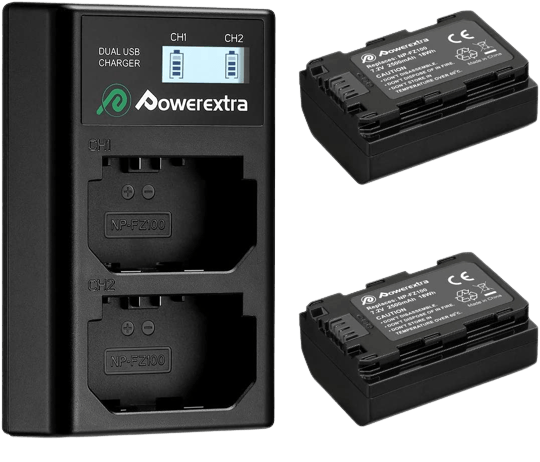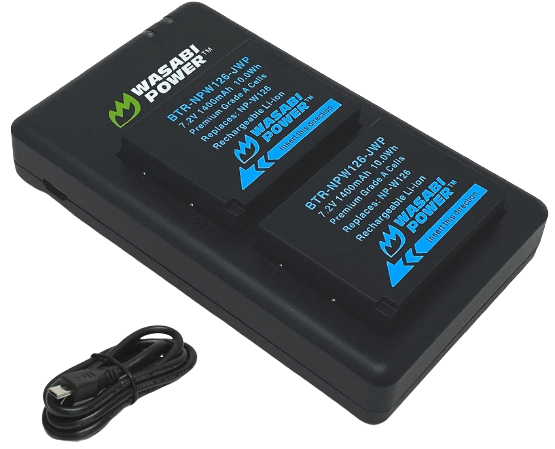The worst feeling in the world is holding a camera with a dead battery. You might own the most expensive digital camera in the world, but it is useless without a battery. So what about off-brand batteries? Are they safe to buy? Do they work? Let’s find out! The BM Premium LP-E6NH batteries are the best for Canon users. Keep reading to find out more about third-party camera batteries. [ExpertPhotography is supported by readers. Product links on ExpertPhotography are referral links. If you use one of these and buy something, we make a little bit of money. Need more info? See how it all works here.]
What Are Third-Party Camera Batteries?
A third-party camera battery is also called “off-brand” or “aftermarket.” It is made by companies that did not create the original battery. Each camera company makes a line of batteries to work with their cameras. So, brands like Canon create their own “original” camera battery. And they’re called the Original Equipment Manufacturer or “OEM.”
Designations and Compatibility
The names of the batteries are not catchy or memorable. They are numbers and letters that make sense only to the camera company. So always make sure you are comparing like with like when looking at price. And make sure your camera body is listed as compatible. Camera companies upgrade their batteries to add more power. Or they use differently sized units in some product lines. So ensure you’re using the correct counterpart to avoid any compatibility problems.
Pros and Cons of Third-Party Batteries
There is a wide array of companies that make aftermarket camera batteries. It is impossible to generalize about quality. But are third-party batteries good? The answer is yes… Sometimes. Some aftermarket batteries are better than others. Over the years, I have bought third-party camera batteries. And I have had good experiences with them. But other users report problems. Let’s examine the pros and cons of aftermarket batteries. (With highlights of the best options for Canon, Nikon, Fujifilm, and Sony.)
Pro: Lower Prices
The most common reason to buy third-party batteries is the affordable price. Camera manufacturer designs OEM batteries. So they come at a premium cost. Buying even a couple of extra name-brand batteries may cost you hundreds of dollars. The new Nikon battery released in 2022, the EN-EL18d, costs a whoppingly high price! To some extent, you are paying the extra price for peace of mind. Camera companies know that some photographers feel better buying the brand name. So the higher price is not necessarily because the product is better. A third-party camera battery costs less. And good replacement batteries are generally a quarter to half the cost of OEM batteries. You may not even be able to tell the difference between the brand name and the third-party battery. But in some instances, you may get what you pay for.
Con: Reduced Power and Longevity
Users sometimes report that aftermarket batteries do not last as long as brand names. They may deplete faster when taking photos. Or they may have a shorter life span. Sometimes this is expected. Third-party batteries do not necessarily give you the same capacity as their equivalent. And a battery may be compatible with your camera, but it may not have the same specs. Take, for example, the milliampere-hour (mAh) for Nikon’s EN-EL15c and the Wasabi equivalent. The brand name battery has 2280 mAh. The Wasabi has 2000 mAh. All other things equal, the higher number in the battery gives you more operating time. Lower-powered batteries may not achieve your camera’s max frame rate (or burst mode). This is not necessarily a problem. Just don’t expect more than you are buying. But third-party batteries are not always less powerful than their original counterparts. Many good aftermarket batteries have more storage capacity.
Pro: Extreme Problems Are Rare
Photographers use third-party batteries when supplies are low and OEM batteries unobtainable. And some reviews of third-party batteries note worrisome problems. The most alarming is a battery making your camera explode! Here are some of the other worst-case scenarios:
Batteries swell over time or become hot The camera does not recognize the battery Aftermarket batteries ruin cameras
But reports of these issues appear to be rare with aftermarket batteries from established companies. Most online reviewers seem okay with their choice. And their concerns are not super dramatic.
Affordable Cost Outweighs Potential Problems
Most aren’t worried about their digital camera being damaged or blowing up. Most people are concerned about the longevity of batteries and whether they are worth the price. Users sometimes report issues, mainly involving camera batteries not remaining charged as long as the OEM ones. Or they have limited battery life in comparison. Users are aware of the potential problems. But they’re willing to take the risk for a significant discount. Plus, problems can happen with any battery, including OEM batteries. Samsung recalled their Galaxy Note 7 phones after reports of batteries overheating.
Best Third-Party Camera Batteries to Buy
There is a mind-boggling array of third-party batteries, so we can’t be exhaustive. Here are a couple of the best choices for the most popular camera makers. These include Canon, Nikon, Sony, and Fujifilm. And if you buy a third-party battery, don’t automatically assume that there is no warranty. Some companies stand behind products. For instance, BM Premium offers a one-year product warranty and safety guarantee! The BM Premium version of the LP-E6NH is about a third of the cost of a Canon battery. They come in a two pack with a charger. The company offers a one-year warranty and a safety guarantee. Many photographers like BM Premium’s battery and rate it highly. Most users reported that these batteries functioned exactly like the Canon counterpart. That includes shooting at a high frame rate. They’re good quality and dependable. A two pack with a charger from Powerextra costs a little less than the BM Premium LP-E6NH. The batteries have a higher capacity than Canon batteries of 2950 mAh. And they come with a USB port and cable for USB charging. There are reports of the battery draining faster than Canon batteries. But reviewers seem happy and many give it a high rating. This battery supports high-speed shooting and stays cool during video recording. You may be unable to tell the difference between a Powerextra battery and one made by Canon. BM pPremium offers EN-EL15c batteries at half the cost of Nikon, and you get two plus a dual battery charger. Both Nikon and BM Premium batteries have 2280 mAH. The retailer offers a safety guarantee and a one-year warranty on their chargers. Photographers like the product and rate it highly. But some reported batteries faded faster than Nikon. One user reported an issue with the batteries shutting down their camera. Another person told of a video recording error. But most photographers found that these batteries worked fine. Wasabi’s EN-EL15c batteries are even less expensive than the ones made by BM Premium. You get two batteries for about a third of the cost of ones made by Nikon. It is a little less powerful at 2000 mAh versus the 2280 mAh Nikon. But Wasabi offers a three-year warranty on this product. Most photographers give the battery a decent review. But there are some concerning issues. Users found that it doesn’t hold a charge like OEM. Some reported communication errors with their camera. Others who have previously used Wasabi products had problems with this unit. But many feel these are worth the cost. For the same price as one Sony NP-FZ100, you can get two Neewer NP-FZ100 batteries plus a charger. This one has the same capacity as Sony batteries. Some photographers report error warnings with batteries from other companies, but not Neewer. It seems to work well, with many users rating it very well. And customers seem to really like the accompanying charging unit. For two-thirds of the cost of a Sony battery, you can get two Powerextra batteries with a charger. The capacity is higher than the original at 2500 mAh. Ratings are high for the battery. And lots of users give it a good rating. But reviews are mixed. Some users report that they last as long as the brand name. Others find that it drains faster. But all in all, the battery seems to work fine with no camera errors. An NP-W126 two-pack with a charger from Powerextra is less than half the cost of a Fujifilm brand battery. And the third-party batteries have a slightly higher capacity of 1500 mAh. There seem to be no compatibility issues with the cameras. And they have the same power as Fujifilm batteries. Users especially like the charging unit. Wasabi and Powerextra are similar in cost. These NP-W126 Wasabi batteries (with charger) have a higher capacity of 1400 mAh. Some photographers report that they last as long as the brand name. Others found that they drain faster. But all in all, the battery seems to work fine with no camera errors.
Conclusion
These are some of the best third-party camera batteries around. In the end, photographers want quality batteries that won’t disappoint them in the field. As you can see, you can buy the best third-party batteries at half the cost of brand-name batteries. And they function as well or nearly as well as the originals. It’s worth getting 80% or more performance for 50% of the price! Canon users should go for the BM Premium LP-E6NH batteries. They’re safe, reliable, and excellent value.
